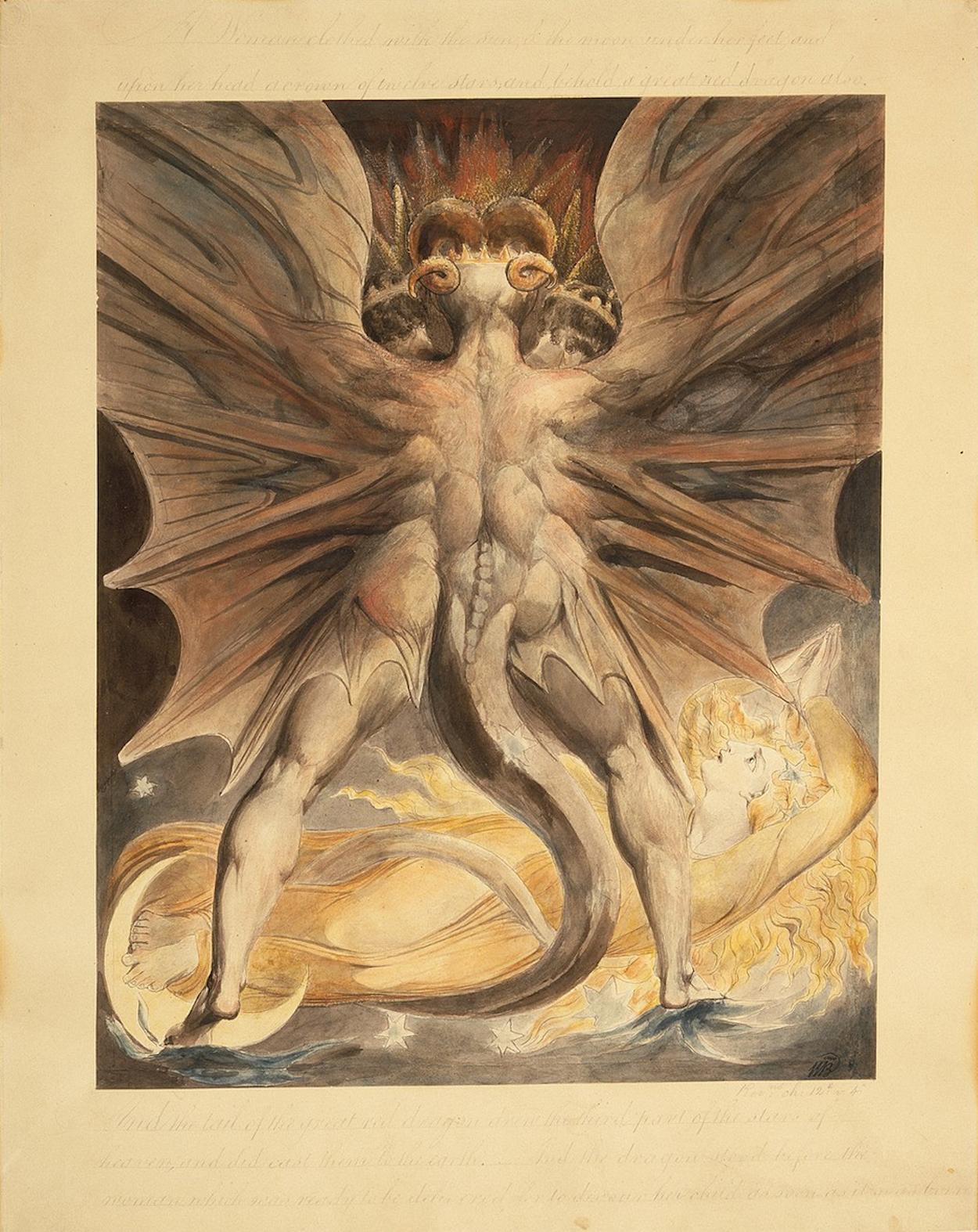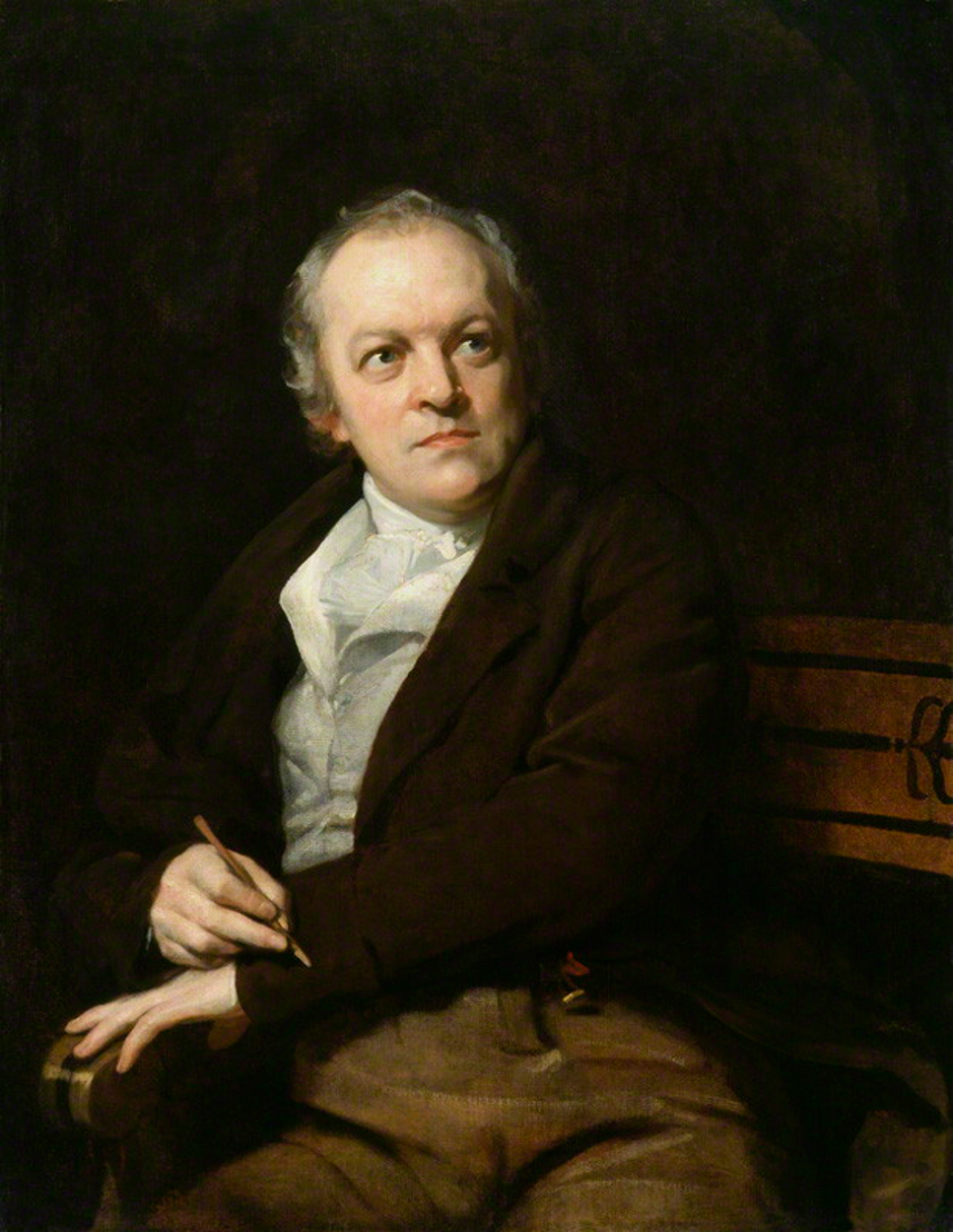The Book of Revelation has inspired and intrigued its readers for as long as it has existed. The interpretations of its meaning are manifold, its origins contentious and even its literary form cannot be pared down to just one genre, but it is undeniably both mysterious and dramatic. In this painting by English artist and poet William Blake (1757–1827) the male classical nude is transfigured into a huge, muscular embodiment of Satan. He looms over a prostrate, praying woman bathed in golden light. She is about to give birth to the son “who will rule all the nations with a rod of iron” (Rev. 12:5, King James Version) and the Great Red Dragon means to devour the child. The woman escapes and Satan (after doing battle with Michael and his angels) is cast out of heaven.
Fascination with the Book of Revelation hasn’t diminished since then. It’s possible that you recognise this image from the 2002 film Red Dragon (based on the novel by Thomas Harris)? You might also know about it from the Omen films! Blake’s image is particularly striking though: the sense of power and movement conveyed here is palpable, and we do not see the face of Satan but instead the expression of the woman as she is confronted by death, her eyes uplifted towards heaven and salvation. Despite his formidable presence it is clear that Satan is not the one with power.
- Sarah Mills
The inscription below the image reads:
“And the tail of the great red dragon drew the third part of the stars of/heaven, and did cast them to the earth. And the dragon stood before the/woman which was ready to be delivered for to devour her child as soon as it was born.”
Rev. 12:4, King James Version
P.S. Here's more from the Bible according to Blake.


 William Blake
William Blake